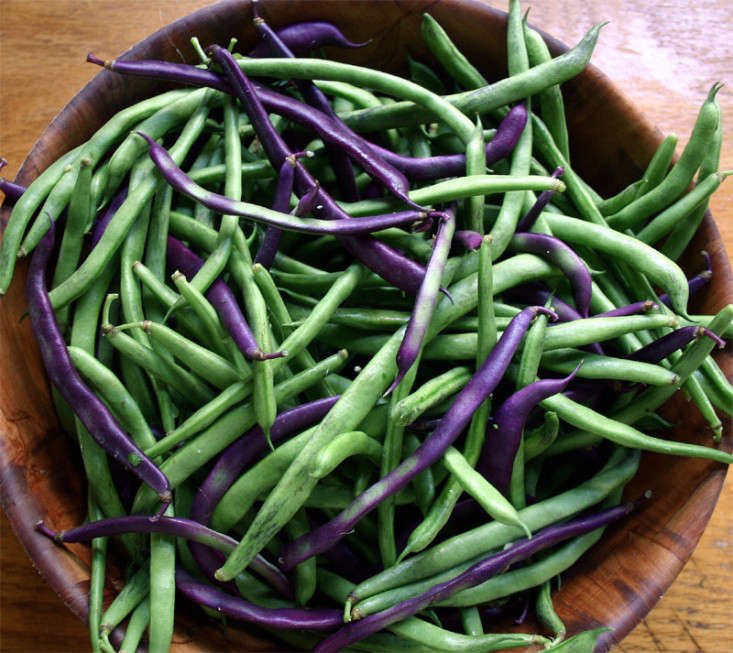Pole Beans, Phaseolus vulgaris: “The Beanstalk”
Pole beans are simply a vining cultivar of edible beans. Both bush and pole beans have several options of beans and flowers to choose from—there’s yellow, purple, and green pods. Dozens of heirloom varieties provide an array of option for every climate and culinary need.
Both bush and pole bean plants produce “green beans,” and dried bean varieties come in bush or pole varieties as well.
Above: See how to build a Vegetable Garden Design: DIY Bean Trellis. Photograph courtesy of Wahsega Valley Farm.
Pole beans are a perfect addition to summer gardens, as they provide shade and late-blooming flowers alike. Grow the in different places every season to spread the nitrogen around your garden, and try pairing with cucumbers or tomatoes to get double duty from trellises. Avoid planting near alliums.
Above: Photograph by H. Zell via Flickr.
Cheat Sheet
- Soak beans in rhizobium bacterium before planting to help plants fix nitrogen and boost yields. (Most major seed companies sell the inoculant.)
- Pole beans attract pollinators.
- Pole beans provide shade in sunny gardens.
Keep It Alive
- Pole beans thrive in full sun; water an inch per week, especially when flowering and fruiting.
- Avoid spraying the foliage, and mulch pole beans when they are 5-6 inches high to provide even moisture.
- Plant in late spring to early summer. Beans count as a summer crop–they grow best between 70 and 80 degrees, in soil and air temperatures.
Above: A packet of Dean’s Purple Pole Snap Beans is $3.25. Photograph courtesy of Wahsega Valley Farm.
Green beans deliver a hearty dose of protein; vitamins A, K, and C; manganese; fiber; magnesium, and potassium, to name just a few. Plant in your garden a week or two after the last frost, and protect if temperatures happen to drop again–pole bean plants will suffer if frosted. Amend your soil with compost and sow beans in the most well-drained area of your yard–they hate getting their feet wet.
Planning an edible garden for spring? See our recent Plant Guides on Strawberries, Peas, and Tarragon.
Finally, get more ideas on how to successfully plant, grow, and care for pole beans with our Pole Beans: A Field Guide.
Interested in other edible plants for your garden? Get more ideas on how to plant, grow, and care for various edible plants (including flowers, herbs and vegetables) with our Edible Plants: A Field Guide.












Have a Question or Comment About This Post?
Join the conversation